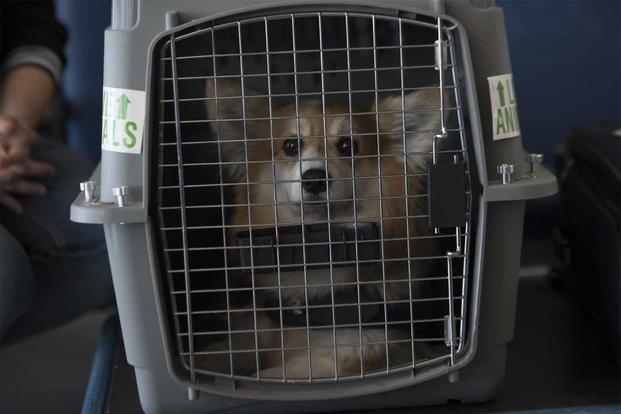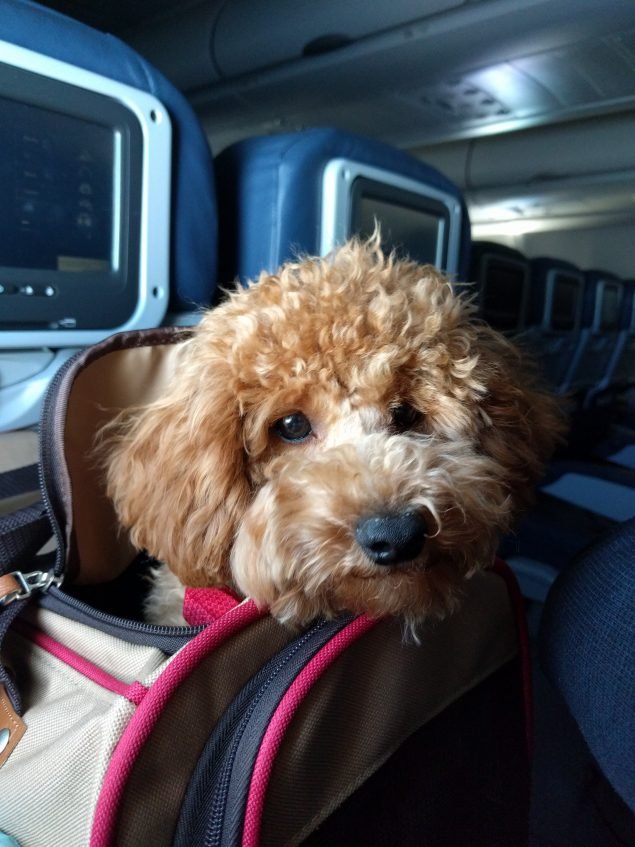Moving pets within the U.S.? Here’s a concise answer: Moving pets within the U.S.
Requires thorough planning and preparation to ensure their safety and well-being throughout the journey.

Credit: www.acrossthepondpet.com
Requirements For Moving Pets
Planning to move but worried about how to take your beloved furry friend along with you? Don’t fret! With the right preparation and knowledge of the requirements for moving pets within the U.S., you can ensure a smooth and stress-free relocation for your pet.
Pet Identification
One of the most crucial steps to take before moving your pet is to ensure proper identification. This is important in case your pet gets lost during the transit or at the new location.
Here are some key aspects to consider for pet identification:
- Ensure your pet has a collar with an ID tag containing up-to-date contact information, including your phone number and address.
- Consider getting your pet microchipped, which provides a permanent form of identification that cannot be lost or removed.
- Register your pet’s microchip with a national pet recovery database to increase the chances of a safe return if they go missing.
Vaccinations And Health Certificates
Prior to moving your pet, it is essential to ensure they are up-to-date on their vaccinations and obtain a health certificate from a licensed veterinarian. These precautions are necessary to protect your pet’s health and comply with state and national regulations.
Here’s what you need to know about vaccinations and health certificates:
- Vaccinations: Ensure your pet is vaccinated for common diseases, such as rabies, distemper, and parvovirus. Some states may have specific vaccination requirements, so research the regulations of your new destination to stay compliant.
- Health Certificate: Schedule a visit with your veterinarian to obtain a health certificate, typically issued within a certain timeframe before travel. This certificate confirms that your pet is healthy and fit for travel, providing peace of mind for both you and your furry companion.
Microchipping
In addition to pet identification tags, microchipping is a highly recommended method to ensure the safety and retrieval of your pet if they happen to get lost during the move. Microchipping involves implanting a tiny chip under your pet’s skin, which contains a unique identification number. This ID number is linked to your contact information in a nationwide pet recovery database. If your pet gets lost, animal shelters, veterinarians, and other relevant authorities can scan the microchip to obtain your contact details and facilitate a reunion.
Choosing The Right Transportation Method
Moving pets within the U.S. can be both exciting and stressful. As a pet owner, one of the most important decisions you’ll need to make is choosing the right transportation method to ensure the safety and well-being of your furry friend. There are various options available, each with its own considerations and advantages. Let’s explore the three main methods: Air Travel, Ground Transportation, and Self-Transportation.
Air Travel
Air travel is one of the most common ways to transport pets over long distances. Airlines have specific regulations and requirements for pet travel, so it’s essential to familiarize yourself with the policies of the airline you plan to use. Some key points to consider when choosing air travel for your pet include:
- Checking if your pet meets the airline’s age and health requirements.
- Ensuring your pet’s carrier or crate complies with the airline’s specifications.
- Verifying if your chosen airline has restrictions on specific breeds or types of animals.
- Planning your travel dates and times carefully to avoid extreme temperatures that could affect your pet’s well-being.
- Investigating any additional fees or charges associated with pet travel.
Ground Transportation
Ground transportation provides an alternative option for moving pets within the U.S. This method is particularly suitable for shorter distances or for pet owners who prefer not to use air travel. Here are some factors to consider when choosing ground transportation for your pet:
- Researching reliable pet transport companies that specialize in ground transportation.
- Checking if the company has appropriate equipment and vehicles specifically designed for transporting pets safely and comfortably.
- Ensuring the drivers of the transport company have experience handling pets and are knowledgeable about their specific needs during transit.
- Verifying the company’s insurance coverage for any unforeseen incidents or accidents.
- Preparing your pet with ID tags, microchips, and necessary vaccinations in case of any unexpected events during the journey.
Self-transportation
Another option to consider is self-transportation, especially if you prefer to have full control and be directly involved in your pet’s journey. Here are some tips for self-transportation:
- Planning your route carefully, making sure to locate pet-friendly accommodation and rest stops along the way.
- Ensuring your vehicle has adequate space and proper safety measures, such as secure carriers or harnesses.
- Taking frequent breaks during long drives to allow your pet to stretch, go for walks, and relieve themselves.
- Packing essential items, including food, water, medications, toys, and familiar bedding, to keep your pet comfortable and reduce stress.
- Being mindful of your pet’s needs throughout the journey, providing reassurance and attention when required.
Preparing Your Pet For The Move
Moving can be a stressful time for both humans and pets. However, with proper preparation, you can ensure a smooth transition for your furry friend. Taking the time to introduce the carrier, scheduling a vet check-up, and packing familiar items can help your pet feel more comfortable and secure during the move. This guide will walk you through these essential steps to make the moving process as stress-free as possible for your beloved pet.
Introduce The Carrier
Getting your pet comfortable with their carrier is crucial for a successful move. The carrier will provide a safe and secure space for your furry friend, both during transport and when arriving at the new home. Begin by placing the carrier in a familiar area, filled with their favorite blanket or toy. Encourage your pet to explore the carrier on their own terms, using positive reinforcement such as treats or praise. Gradually increase the amount of time they spend in the carrier, allowing them to become acclimated to the space. This gradual introduction will help alleviate any anxiety they may feel about being confined during the journey.
Schedule Vet Check-up
Prior to the move, it’s important to schedule a vet check-up for your pet. This will help ensure that your furry friend is in good health and up-to-date on all necessary vaccinations. Inform your vet about the upcoming move and ask for any specific recommendations. They may suggest additional medications or calming supplements to ease your pet’s anxiety during the journey. Additionally, consider obtaining copies of your pet’s medical records, just in case you need them when settling into your new location.
Pack Familiar Items
Packing familiar items is essential in helping your pet feel secure during the move. Place their favorite toys, bedding, and even a shirt with your scent in the carrier. Familiar scents and objects will provide comfort and alleviate any anxiety your pet may experience. Having these items readily available upon arriving at the new home will also help them settle in more quickly. Remember to pack enough food, water, and any medications your pet will need during the journey, to ensure they have everything they require for the duration of the move.

Credit: www.military.com
Tips For A Smooth Moving Experience
Moving can be a stressful experience, not only for you but also for your beloved pet. Whether you’re moving across the country or just a few miles away, it’s important to take certain measures to ensure your pet’s comfort and minimize stress during the move. With these tips, you can make the moving process as easy as possible for your furry friend.
Keep Your Pet Comfortable
During the move, it’s crucial to prioritize your pet’s comfort. To make your pet feel at ease, consider the following:
- Create a cozy space in your new home where your pet can retreat to. Set up their bed, favorite toys, and familiar belongings to make them feel safe and secure.
- If traveling by car, make sure to bring along your pet’s travel essentials, including food, water, leash, and any necessary medications. Having these items easily accessible will help them feel comfortable throughout the journey.
- Place a familiar-smelling blanket or towel in their carrier or crate to provide a sense of familiarity and comfort during the move.
- Keep your pet’s routine as consistent as possible before and after the move. Maintaining their usual feeding, walking, and playtime schedules will help minimize anxiety and confusion.
- Consider using natural calming aids, such as lavender-infused sprays or calming pheromone diffusers, to soothe your pet’s nerves during the move.
Stick To Routines
Consistency is key when it comes to transitioning your pet to a new environment. By sticking to their routines, you can help them adjust more smoothly. Keep the following in mind:
- Try to maintain your pet’s regular feeding and exercise schedule, even amidst all the chaos of packing and moving. This will give them a sense of stability and familiarity.
- If possible, keep their sleeping arrangements and walking routes as close to their previous routine as you can. Familiar sights, smells, and sounds will help ease their anxiety in the new surroundings.
- Once settled into your new home, gradually introduce any necessary changes to their routine. Keeping changes minimal at first will help them adapt more easily.
Minimize Stress
Moving can be overwhelming for pets, so taking steps to minimize their stress levels is essential. Consider the following strategies:
- Ensure your pet is safely secured during transport. Use a well-ventilated carrier or crate that allows them to lie down, stand, and turn around comfortably. This will help prevent injuries and keep them calm during the journey.
- If your pet tends to get anxious or motion sick during car rides, consult your veterinarian about possible anti-anxiety medications or natural remedies that may help.
- To avoid your pet running away during the move, make sure they are microchipped or wearing tags with updated contact information. This will provide a safety net in case they accidentally escape in the chaos of moving.
- Limit your pet’s exposure to the moving process itself. The noise and activity can be overwhelming for them, so confine them to a quiet, secure room away from the commotion.
- If your move involves air travel, follow the specific regulations and guidelines provided by the airline to ensure a smooth and stress-free journey for your pet.
By incorporating these tips into your moving plans, you can help your pet have a smoother and less stressful experience. Remember, their comfort and well-being should always be a top priority throughout the moving process.
Adapting To The New Home
Moving to a new home can be an exciting yet overwhelming experience, not just for humans but also for our furry friends. As you settle into your new place, it’s important to help your pets adapt to the changes around them. Creating a calm and safe environment will make the transition smoother and ensure their well-being. To help you through this process, we have broken down some key steps to consider when moving your pets within the U.S.
Unpacking Your Pet’s Belongings
Just like humans, pets also have their favorite belongings that provide them with a sense of familiarity and comfort. When you arrive at your new home, begin by unpacking your pet’s essential items first. This may include their bed, toys, and dishes. Having their familiar items around will help them feel more at ease in their new surroundings. Place these items in a designated area, creating a safe space for your pet to retreat to whenever they need a moment of solace.
Creating A Safe Space
Establishing a safe space for your pet within your new home is crucial. Choose a quiet and secluded area where they can take refuge when feeling overwhelmed or anxious. This could be a spare room, a corner of the living room, or even a spacious closet. Make sure the designated space is free from any potential hazards, such as loose wires or toxic plants. Add their bed, blankets, and toys to this area, creating a cozy environment that they can call their own.
Gradual Exploration
Once you have unpacked, organized, and set up your pet’s belongings, it’s time to gradually introduce them to the rest of their new home. Start by allowing them to explore one room at a time, preferably starting with the area nearest to their safe space. Keep a close eye on them during these exploratory sessions, making sure they are comfortable and not getting into any trouble. As they become more familiar with their surroundings, gradually expand their boundaries, allowing them to explore the entire house at their own pace.
In conclusion, moving to a new home can be stressful for pets. However, by following these simple steps of unpacking their belongings, creating a safe space, and gradually introducing them to their new environment, you can help your furry friends adapt and feel at home in no time.

Credit: www.military.com
Frequently Asked Questions Of Moving Pets Within The U.s.?
Can You Move Pets Interstate?
Yes, you can move pets interstate.
How Much Does It Cost To Ship A Pet Across The Us?
Shipping a pet across the US costs vary, but typically range from $200 to $600. Factors like distance, pet size, carrier fees, travel crate, and additional services influence the final price. It’s best to check with trusted pet shipping services for an accurate quote.
What Is The Cheapest Way To Transport A Pet?
The cheapest way to transport a pet is by traveling with them in the cabin of an airplane. This option avoids the additional fees associated with cargo transport. However, you should check with the airline for their specific pet policies and requirements.
What Do You Need To Travel With Your Pet Within Us?
To travel with your pet within the US, you need a few things: a valid health certificate, up-to-date vaccinations, and a sturdy carrier or crate. Make sure to check airline and destination requirements beforehand for a smooth journey.
Conclusion
Moving pets within the U. S. Can be a daunting task, but with proper planning and research, it can be a smooth process. From finding pet-friendly accommodations to ensuring their comfort during the journey, there are several factors to consider.
By following the guidelines provided by airlines and taking necessary precautions, pet owners can ensure the safety and well-being of their beloved furry friends. Remember, a stress-free move for pets is crucial for their overall health and happiness. Plan ahead and make the necessary arrangements to make the pet relocation a positive experience for everyone involved.

